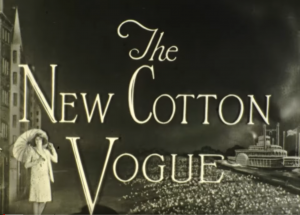 Things captured on film are historically important and provide the only remaining cinematic evidence of cultural heritage that has vanished or changed with the passage of time. Films documenting the history of the city of Fall River, Massachusetts, are exceedingly rare and have survived only by chance.
Things captured on film are historically important and provide the only remaining cinematic evidence of cultural heritage that has vanished or changed with the passage of time. Films documenting the history of the city of Fall River, Massachusetts, are exceedingly rare and have survived only by chance.
The earliest film footage pertaining to Fall River that has surfaced, to date, documents the aftermath of the devastating conflagration – known as the Great Fire of 1928 – that destroyed a vast stretch of the northern portion of the downtown business district on February 2-3, 1928. That film is preserved in the collection of the Fall River Historical Society (FRHS).
References to film footage of a February 15, 1916, conflagration that engulfed the southern section of the downtown business district – the Great Fire of 1916 – exist in the FRHS collection. If the actual film has survived it has not yet been located.
It is accepted by film historians that more than ninety percent of all films made before 1920, and fifty percent made before 1950, have been lost due to the unstable nature of the medium, coupled with inadequate storage. Cellulose nitrate film base is extremely flammable and is known to auto-ignite. It fades and decomposes, with the acrid vinegar-like odor emanating from old film canisters – called “vinegar syndrome” – signaling its death knell.
Yet, despite oftentimes sub-par storage conditions, important footage has managed to survive and, once digitized, flickers like a time-machine to magically transport the viewer to another era. In this case: A late 1920s Fall River textile mill – “the Largest in the World”; and a fashion show, with Hollywood starlets of the silent era modeling outfits cut from the same mill’s “Latest Cotton Creations.”
Tom Borden has given the FRHS access to two rare films. Tom is a great-great-grandson of print cloth magnate Matthew Chaloner Durfee Borden, a.k.a. “the Calico King” (1842-1912), who reorganized the failed American Print Works into the American Printing Company, which became the largest print cloth company in the world.
The films: The New Cotton Vogue, two short, promotional films – silent and captioned with title cards – that were filmed and edited for M.C.D. Borden & Sons by Joseph Weil and released in 1929. Expensive to produce and featurette-like in quality, the films were likely intended to be shown to moviegoers during the widely popular newsreel presentations exhibited preceding feature films, or in newsreel theatres.
From the forthcoming book by Jay J. Lambert (America Textile Colossus: The Story of Fall River, Massachusetts, its Cotton Manufacturing Industry, and its People), “Although born and raised in Fall River, Matt Borden spent his adult life in New York City where he moved after graduating from Yale in 1864. His father appointed him to represent the American Print Works in that city’s dry-goods district. After working for three years as a clerk, he was made a partner in Low, Harriman and Company, a major dry-goods jobbing house. This background gave him a thorough knowledge of the marketing system for cotton textiles. He married Harriet M. Durfee, a daughter of Dr. Nathan Durfee, in 1865. They raised their three sons in New York City, not Fall River, and acquired a town house on West Fifty-Sixth Street and a summer place at the New Jersey shore. He was undoubtedly the greatest of the textile entrepreneurs of the post-Civil War period.
“M.C.D. Borden had no particular loyalty to the Fall River industrialists. Mill No. 4, described as ‘the ideal print-cloth mill in the world,’ had little Fall River machinery. All the looms and spinning frames were from Mason in Taunton, all warpers were from Lowell, all spoolers were from Pawtucket, and all carding machines were from England. There was some local presence: The shafting and pulleys were from Kilburn Lincoln, and the Covel Machine Company put in two of the freight elevators. … The looms were Mason plain looms and not the new automatic Northrop looms of the Draper Company that would come to revolutionize the industry.”
This industrial film footage is extremely significant, unique in scope and content. It documents cotton cloth manufacturing, from the cotton fields of the south, filmed characteristic of the era and idealized with smiling, African-American child laborers. Also depicted are the gritty and clearly cacophonous inner workings of a Fall River textile mill, with its multi-cultural labor force engaged in every phase of production, from unloading bales of raw cotton, to distribution of the finished product.
The tone is set by title cards: “Fall River, Mass – The Borden Mills, Largest in the World” and “Shopping for New Dresses.” Thus, the journey back in time begins.
The FRHS is indebted to Tom and Julie Borden for making this material available.
Cotton Cloth Manufacturing at American Printing Company
Latest Cotton Creations of the American Printing Company
